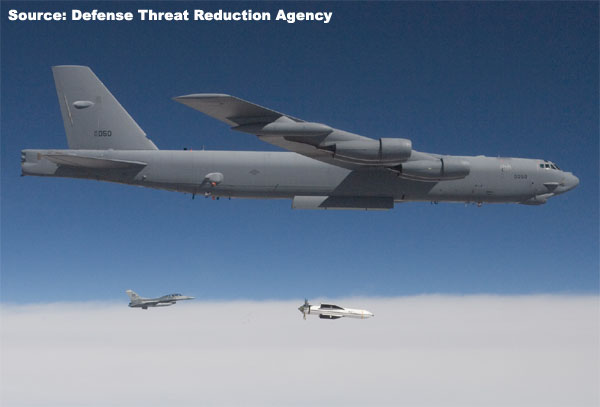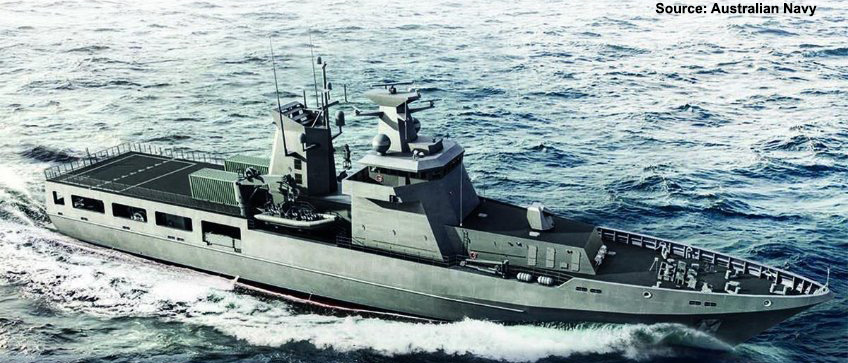What's New

GBU-57 MOP Sees Action in Iran
The GBU-57 Massive Ordnance Penetrator (MOP)is a U.S. munition designed to target armored bunkers and fortified facilities beneath the earth. The weapon consists of a BLU-127 warhead; KMU-612 tailkit; BRU-72 bomb rack systems; MOP loading adapters; and MXU-1012/B separation nuts. The bombs feature precision GPS/inertial navigation guidance systems and have lattice fins for aerial handling. The system is estimated to have a circular error probable (CEP) of less than 16 ft (5 m). Last month, between June 21 and 22, U.S. B-2 Spirit bombers conducted “Operation Midnight Hammer,” striking Iran’s underground nuclear sites at Fordow and Natanz in support of Israel’s ongoing air strike campaign on Iran. The six bombers targeted Fordow with 12 GBU-57 MOPs, while a single B-2 released two GBU-57 MOPs on Natanz.

TAMANDARE Frigate to Begin Sea Trials This Month
Brazil’s TAMANDARE frigate is set to begin sea trials this month before entering service. TAMANDARE is set to the be the lead ship of a class of four advanced frigates planned to enter service between 2025 and 2029. The 3,800-ton frigates are planned to be used for escort duties, patrol, sovereignty enforcement, search and rescue, counter-piracy, fisheries protection and pollution control. The ship’s Combined Diesel and Diesel (CODAD) propulsion configuration produces 28,934 bhp of total power, allowing for a maximum speed of 25 knots. The ship can reach a range of 5,500 nm (10,185 km). Weapons include 12 vertical launch cells for CAMM missiles, an Oto Melara 76-mm Super Rapido main gun and the joint Brazilian-Emirati Mansup anti-ship missile.

Australia Commissions First Arafura OPV
The Australian navy commissioned the offshore patrol vessel (OPV), ARAFURA on June 28 in Western Australia. The 262-ft (80-m) vessel is the lead ship of its class and the first dedicated OPV to enter service with the Australian navy. Originally envisioned as a class of 12, the now six planned ARAFURA class vessels are designed to protect Australia’s territorial waters and assist in humanitarian missions. The ships are fitted with an array of sensor systems including the Saab Situational Awareness System (SAS), Saab EOS 500, Safran Vigy Engage and Terma Scanter 6002 air and surface surveillance radars. A Rafael Typhoon remote-weapon station equipped with a 25-mm M242 Bushmaster chain gun and two 12.7-mm machine guns provide close-in protection.
Check Out What Else is New
Updates this month include the U.S. GBU-57 Massive Ordnance Penetrator (MOP), the Brazilian TAMANDARE-class frigate, Tunisian HANNIBAL-class large patrol vessel, Australian ARAFURA-class offshore patrol vessel and the Israeli BlueWhale autonomous unmanned vehicle (AUV).
Special Reports:
Indonesia’s Kaan Jet Fighter Deal with Turkey: Symbolism or Substance?
Daniel Darling
On June 11, Turkey announced that Indonesia had agreed to purchase 48 Kaan fifth-generation fighter jets, marking the first export commitment for the Turkish Aerospace (TAI)-developed aircraft. The announcement, tied to a broader defense cooperation agreement between President Prabowo Subianto and President Recep Tayyip Erdogan, lacks the force of a binding contract. Still, Erdogan hailed it as a “record-breaking” deal, despite the absence of disclosed financial details.
While Ankara celebrated the agreement as a public relations victory, the core question is whether Jakarta’s commitment is real or rhetorical. Indonesia’s fighter acquisition policy remains volatile, often shifting week to week, and its Air Force (TNI-AU) has struggled to meet long-standing modernization goals.
Military Periscope FEDLINK information
Service ID: UC
Contract Number: LCFDL24D0002
Military Periscope is a product of GovExec.
600 New Hampshire Ave., Suite 510,
Washington DC, 20037, USA.
customerservice@militaryperiscope.com
©Military Periscope 2025
All rights reserved. Redistribution of the content is prohibited without prior consent of Military Periscope.

